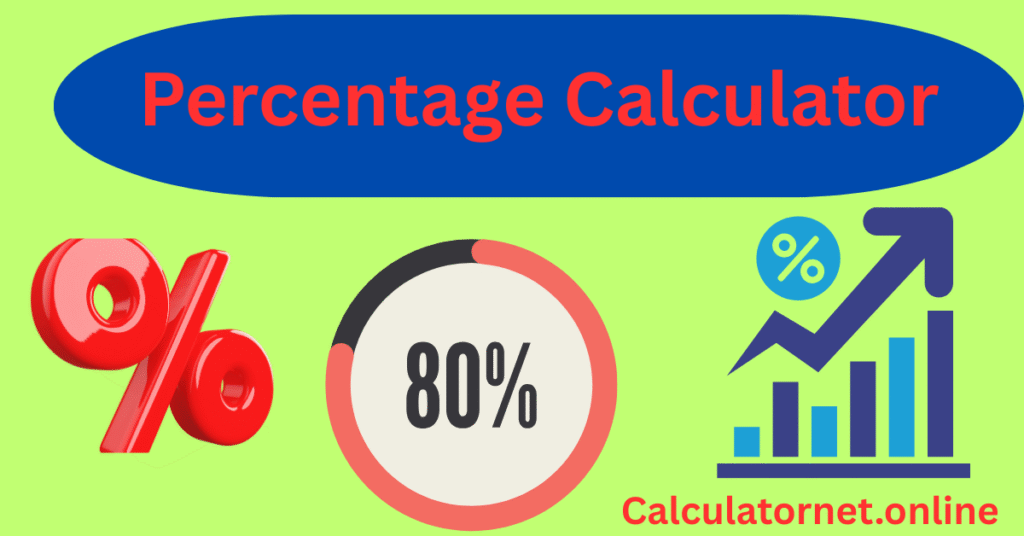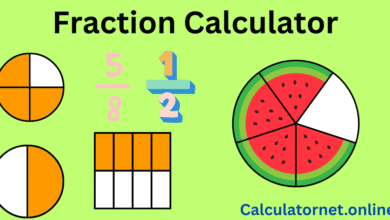Percentage Calculator
Percentage Calculator

Percent Calculator
What is X% of Y?
X is what percent of Y?
Increase or Decrease a Number
Percentage Change
Support the Developer
Bank Details:
Name: Majid Farooq
Bank: Habib Bank Limited
Account/IBAN: PK40HABB0001947100292703
Country: Pakistan
Percentage Calculator: The Easiest Way to Solve Your Math Problems
Whether you’re trying to figure out a tip at a restaurant, calculate a discount during a sale, or understand statistics for a report, percentages are everywhere. But for many, the phrase “percentage calculator” brings to mind complex formulas and frustrating mental math. What if there was a simple way to handle these calculations without the headache? This article will break down what percentages are, show you the simple formulas behind them, and prove that you don’t need to be a math genius to use them.
What Exactly Is a Percentage?
At its core, a percentage is a way of showing a part of a whole, where the whole is always considered to be 100. The word “percent” literally means “per 100.” So, when you see 25%, it’s the same as saying 25 out of 100, or a quarter.
Understanding this simple concept is the first step to mastering percentage calculations. It’s a way to express a relationship between two numbers in a standardized format that’s easy to compare. For example, it’s easier to compare 25% to 50% than it is to compare 1/4 to 1/2.
The Simple Percentage Formula
The basic formula for finding a percentage is surprisingly straightforward. It’s an algebraic equation with three key parts:
P×V1=V2
- P is the percentage you’re looking for (or the one you’re using).
- V1 is the first value, or the original number.
- V2 is the second value, which is the result of the percentage calculation.
Let’s look at an example. If you want to find out what 15% of 80 is, you would set up the equation like this:
0.15×80=V2
- Remember, you have to convert the percentage (15%) into its decimal form (0.15) before you multiply.
- The answer, V2, is 12. So, 15% of 80 is 12.
Calculating Percentage Change and Difference
Sometimes you don’t just need to find a percentage; you need to find how much something has changed. This is where the percentage change and percentage difference formulas come in.
Percentage Change: Increase or Decrease
This formula helps you understand the change between an old value and a new value. You use it to find things like a salary increase or a decrease in sales.
Percentage Change=Old Value∣New Value−Old Value∣×100
Let’s say a shirt you want to buy was originally $50 and is now on sale for $40.
Percentage Change=50∣40−50∣=5010=0.2
Multiply the result by 100 to get the percentage: 0.2×100=20. So, the shirt has a 20% discount.
Percentage Difference: Comparing Two Values
Unlike percentage change, which measures change from a single starting point, percentage difference compares two values to find the difference relative to their average. This is often used in science and statistics.
Percentage Difference=(Value 1+Value 2)/2∣Value 1−Value 2∣×100
For example, if one value is 10 and another is 6, the percentage difference is:
(10+6)/2∣10−6∣=84=0.5
Multiply by 100 to get the percentage: 0.5×100=50. The difference between 10 and 6 is 50% of their average.
FAQs About Percentages
Q: What is the fastest way to calculate a percentage?
A: The easiest way is to use an online percentage calculator. Simply enter two values, and the calculator does the work for you, saving you time and preventing errors.
Q: How do you find the percentage of a number?
A: To find the percentage of a number, convert the percentage to a decimal by dividing it by 100, then multiply that decimal by the number. For example, 25% of 200 is 0.25×200=50.
Q: Can a percentage be greater than 100%?
A: Yes. A percentage greater than 100% means that the value is more than the whole. For example, if a company’s profit was $10,000 last year and is $12,000 this year, their profit has increased by 20%, which is 120% of their original profit.
Q: What’s the difference between percentage and percentile?
A: A percentage is a ratio out of 100. A percentile is a measure used in statistics that indicates the value below which a given percentage of observations in a group of observations fall. For example, if you score in the 90th percentile on a test, you scored better than 90% of the other test takers.
Q: How do you turn a fraction into a percentage?
A: To convert a fraction to a percentage, divide the numerator by the denominator, then multiply the result by 100. For instance, to turn the fraction 3/4 into a percentage, you would calculate 3÷4=0.75, and then 0.75×100=75.
Q: How can I calculate tips or discounts easily?
A: For a tip, simply multiply the total bill by the desired percentage in decimal form (e.g., 0.15 for a 15% tip). For a discount, multiply the original price by the discount percentage in decimal form and subtract the result from the original price.
Q: Is a percentage calculator the same as a ratio calculator?
A: They are similar, but a percentage calculator is a specific type of ratio calculator that always uses a base of 100. A ratio can be any relationship between two numbers, while a percentage specifically expresses that ratio “per 100.”
Final Thoughts on Using a Percentage Calculator
As you can see, understanding percentages is a valuable skill in daily life, from budgeting to shopping to understanding news reports. While the formulas might seem intimidating at first, they are based on simple principles. Tools like a percentage calculator make these calculations even easier, allowing you to quickly solve problems without breaking a sweat. So next time you’re faced with a percentage problem, remember the simple formulas and don’t be afraid to use a calculator to get the right answer, every time.
What’s a common percentage calculation you find yourself doing most often? Share your thoughts in the comments below!


